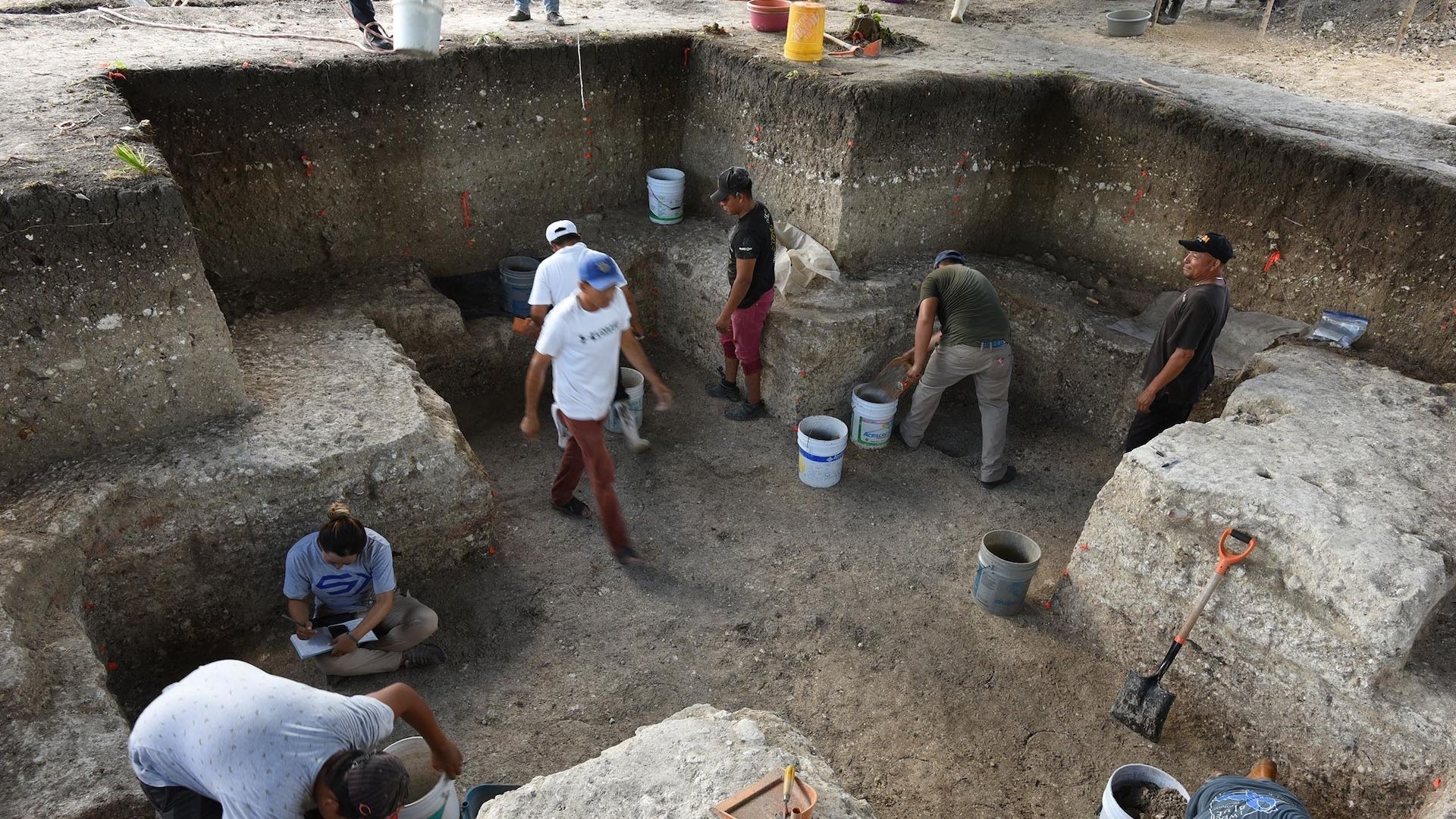Recent archaeological research has uncovered a remarkable discovery in southeastern Mexico: a 3,000-year-old Maya site, known as Aguada Fénix, that researchers believe is a colossal map depicting the ancient Maya worldview of the cosmos, effectively a “cosmogram.” This sprawling complex, predating the Maya writing system, offers unprecedented insight into the beliefs and societal organization of this civilization’s earliest phase.
The Scale and Significance of Aguada Fénix
Aguada Fénix, dating back to 1050 B.C. and abandoned around 700 B.C., is unlike any other site discovered in the Maya region. It’s not only the oldest and largest monumental architecture found, but also rivals, or even surpasses, the size of later Mesoamerican cities like Tikal and Teotihuacan. Spanning an impressive 5.6 by 4.7 miles (9 by 7.5 kilometers), this monumental complex suggests a highly coordinated effort involving a significant population — estimates place the workforce at over 1,000 individuals.
Importantly, the construction appears to have been a communal endeavor rather than the result of forced labor. Researchers speculate the project may have been akin to Stonehenge in prehistoric England — a celebrated collective ritual involving feasting, exchange of goods, and social interaction, which likely incentivized participation. The scale of the undertaking underscores the profound cultural significance of the site.
Unveiling the Cosmogram: Structures and Design
The researchers utilized advanced techniques, including lidar (light detection and ranging), to analyze the landscape beneath the dense jungle canopy. Their analysis revealed that Aguada Fénix was meticulously designed as a cosmogram, crafted through a network of structures including canals, causeways, and a dam. These features intersect to create a series of cross shapes, reflecting the Maya’s understanding of cosmic order.
At the heart of the complex lies an area designated as “E group,” which contained several small buildings and platforms, along with buried deposits of ceremonial objects. These deposits included greenstone ornaments—possibly representing a crocodile, a bird, and a female giving birth—ceramic vessels, and pigments.
A Puzzle of Purpose: Water and Irrigation
While a small lake provided water, the sheer size of the cosmogram, coupled with the lake’s limited capacity, likely meant the canals weren’t continuously filled. Furthermore, there is no evidence of agricultural irrigation, indicating the canals were not intended for growing crops. Instead, it’s believed they played a symbolic role, representing a cosmic network connected to cyclical observations of the sun.
Challenging Social Hierarchy Assumptions
Unlike later Maya sites like Tikal and Copan, which exhibit clear evidence of social hierarchy, Aguada Fénix shows no such signs. This further reinforces the idea that the construction was a collaborative project. Researchers theorize that individuals with specialized knowledge of astronomy and calendrical calculations—perhaps “leading figures”— were responsible for designing the complex.
A Reflection of Cosmic Order
Takeshi Inomata, lead researcher and professor of archaeology at the University of Arizona, explained that the design of the cosmogram mirrors the movement of the sun. According to Inomata, the Maya likely believed the universe was ordered according to north-south and east-west axes, with the east-west axis linked to the movement of the sun and the passage of time. Aguada Fénix was carefully aligned to a specific sunrise direction, connected to the 260-day cycle that later became crucial for Maya and Aztec rituals, demonstrating a profound connection between spatial order and time.
Reactions and Interpretations
The discovery has generated mixed reactions among scholars. While some caution against definitively labeling the site a “cosmogram” until a clearer definition and identification method are established, others view it as a pivotal finding. David Stuart, a Mesoamerican art and writing expert, characterized the research as “careful and meticulous,” while Arlen Chase noted the importance of the ceremonial deposits found within the E group. James Aimers, a professor of anthropology, emphasized the significance of the collaborative construction, aligning with emerging interpretations highlighting collective action over strict social hierarchy in Mesoamerica.
Ultimately, the discovery of Aguada Fénix provides a compelling window into the worldview and social organization of the earliest Maya civilization, revealing a complex and sophisticated understanding of the cosmos and the ways in which ancient people connected their lives to the rhythms of the universe. > This monumental achievement challenges existing assumptions about early Maya society and highlights the power of collective action in shaping the world around us.
